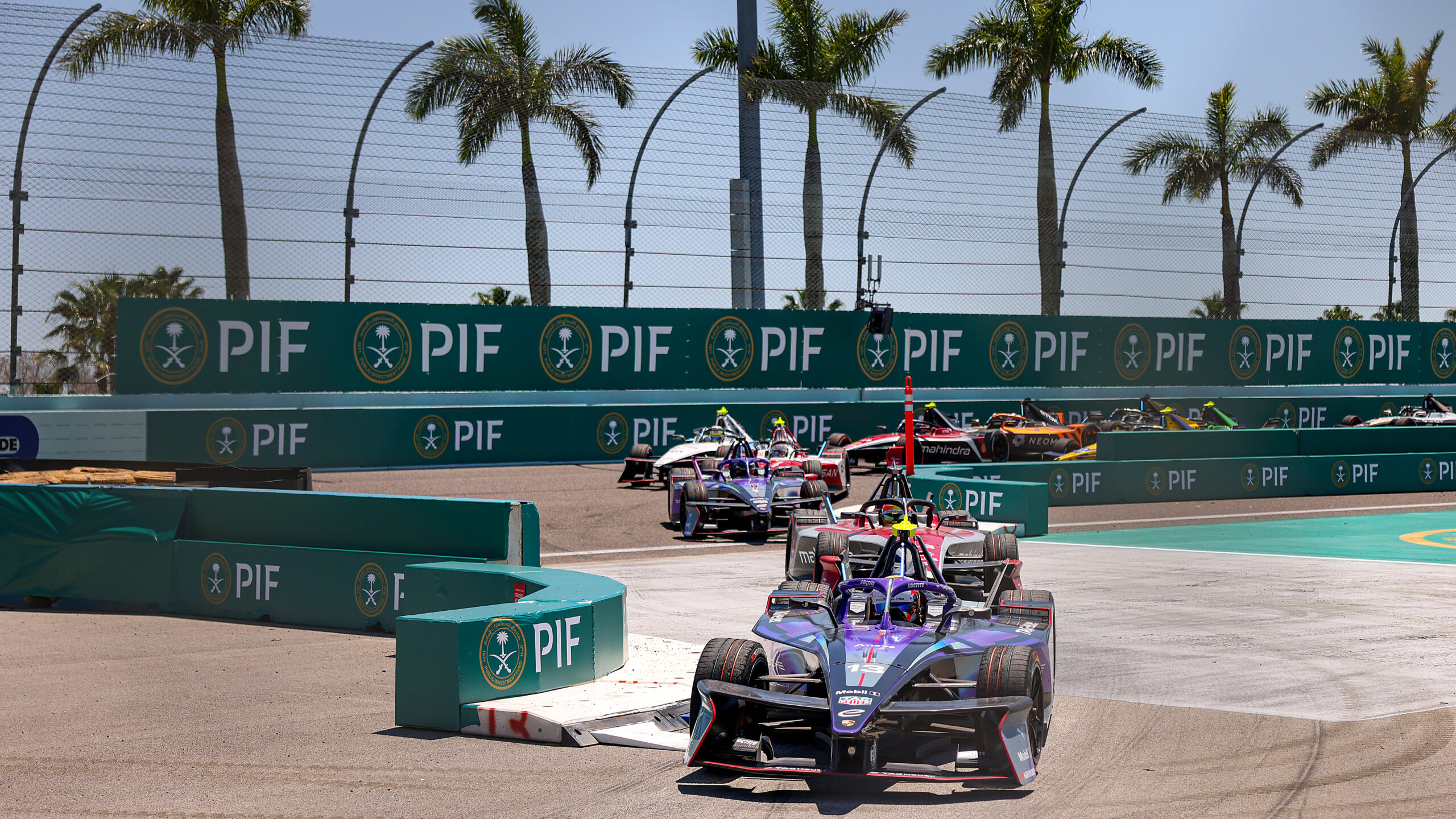Time to go for it
On lap 14, the actual race broke out as everyone started to push at their actual pace. From single-file slipstreaming to running three-wide in a pack, it still looked like Porsche’s day, until a three-car collision at the turn 11 chicane blocked the track, resulting in a red flag. When the cars returned from the pits for the final five laps, some of them had a big problem: they hadn’t yet used all of their attack mode time, and there wasn’t enough time left in the race to do so.
Da Costa had already used all of his allocation and had been building a commanding lead when the red flag came out. Now 50 kW down on most of the cars around him, he slipped back to seventh on track. His teammate Wehrlein had to use just four minutes, and did so to good effect, keeping his car in the lead until the checkered flag. Next on track was Nato, but without time to use all of his Attack Mode, he received an automatic 10-second penalty that dropped him to sixth place.
There were also 10-second penalties for Robert Frijns, Oliver Rowland, Sam Bird, and Taylor Barnard, meaning that second place actually went to Lola-Yamaha’s Lucas Di Grassi. A star of Formula E’s early seasons, in Miami, it looked like the younger version was back in the car as he delivered his best result in several years. The multitude of penalties also promoted Da Costa back into third place.
Antonio Felix Da Costa (l), Lucas di Grassi (m), and Pascal Wehrlein (r) celebrate on the podium.
Credit:
Simon Galloway/LAT Images for Formula E
It’s easy to be cynical about Formula E, and based on the complaints I heard from other journalists in attendance, some people can’t get over a lack of sound in this motorsport. But most of the sport‘s problems are a thing of the past, and the racing usually delivers, even somewhere like the tight and twisty confines of Monaco, where it goes next for a double-header on May 3–4.

